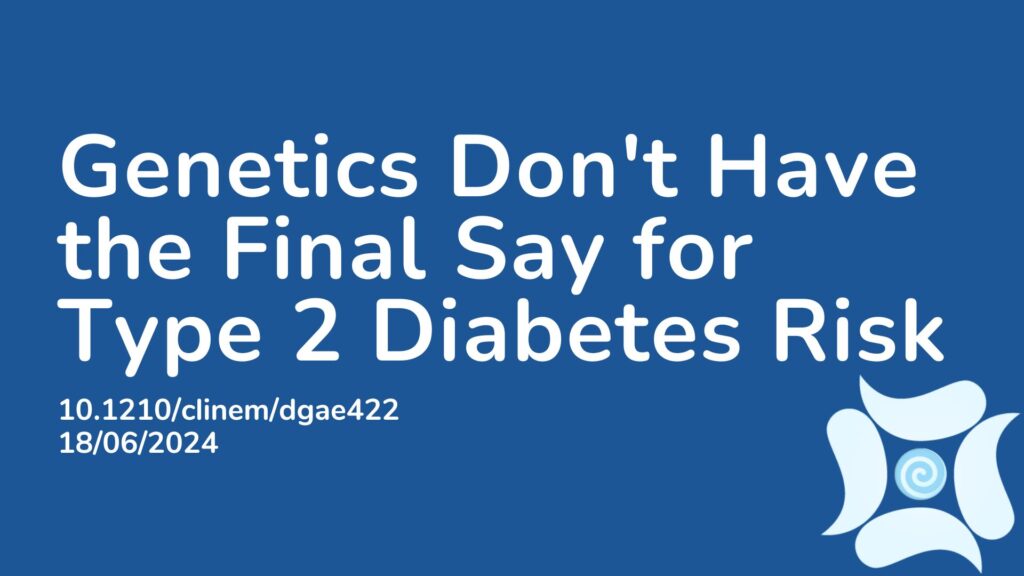Summary:
It is well known that lifestyle interventions such as a healthy diet and increased exercise can prevent or delay type 2 diabetes (T2D) in high-risk individuals. However, it remains unclear whether those who are genetically predisposed can experience the same effectiveness from such interventions. The aim of this paper was to study just that—to determine whether genetic risk, low or high, affects the incidence of T2D when lifestyle changes are introduced. The study included 973 men aged 50-75 years with either a low or high genetic risk score for T2D. It featured two intervention groups: one with low genetic risk and the other with high genetic risk. Participants underwent a 3-year intervention focusing on a healthy diet and physical activity. The results showed that a healthy diet and physical activity significantly reduced the risk of T2D in participants with a high genetic risk. The intervention also significantly improved glucose levels and reduced weight in both genetic risk groups. The authors concluded that individuals with a high genetic risk for T2D benefited from focusing on a healthy diet and physical activity, regardless of genetic predisposition.
Abstract:
Context: Lifestyle intervention prevents or delays type 2 diabetes (T2D) in subjects at a high risk of T2D. However, it is not known whether genetic variants modify the effect on incident T2D during lifestyle intervention. Objective: To investigate whether a low or high genetic risk has effects on incident T2D in a group-based lifestyle intervention study. Methods: The T2D-GENE trial involved 973 men from the Metabolic Syndrome in Men (METSIM) cohort, aged 50-75 years, body mass index ≥25 kg/m2, fasting plasma glucose 5.6-6.9 mmol/L, hemoglobin A1c < 48 mmol/mol, and either a low or high genetic risk score for T2D. There were 2 intervention groups, a low (n = 315) and high genetic risk for T2D (n = 313). They were provided with a 3-year group-based intervention with access to a web portal focused on healthy diet and physical activity. There were also corresponding population-based control groups at low (n = 196) and high (n = 149) genetic risk for T2D who had two laboratory visits (0 and 3 years) and general health advice as a part of their METSIM cohort protocol. The primary outcome was incident T2D, and a secondary outcome was glycemia. Results: The intervention significantly lowered the risk of T2D among the participants with a high genetic risk for T2D [hazards ratio (HR) 0.30, 95% confidence interval (CI) 0.16-0.56, P < .001) whereas in the low genetic risk group the effect was not significant (HR 0.69, 95% CI 0.36-1.32, P = .262). The intervention effect was not significantly different between the high and low genetic risk groups (P = .135). The intervention significantly ameliorated the worsening of glycemia and decreased weight both in the low and high genetic risk groups. Conclusion: Our results showed that individuals with a high genetic risk for T2D benefitted from a low-cost group-based intervention focusing on healthy diet and physical activity. Therefore, all individuals at risk of T2D should be encouraged to make lifestyle changes regardless of genetic risk.
Article Publication Date: 18/06/2024
DOI: 10.1210/clinem/dgae422



